Last updated on September 19th, 2023 at 11:46 pm
There is an ongoing age-old debate between dental implants and fixed partial dentures (FPDs) to determine which option reigns supreme.
Choosing between a dental implant vs FPD is always tricky for both patients as well as dental practioners.
We’ll dive deep into the benefits and drawbacks of each option, and ultimately help you make an informed decision.
Keep reading to find out whether implants or FPDs are the better choice for you!
Table of Contents
Introduction
Missing or damaged teeth often need to be substituted with artificial replacement options.Most patients prefer a fixed replacement option.
The two most common fixed restoration options include dental implants and fixed partial dentures (FPDs).
However, there is always a debate surrounding which option is better.
In this article, we will explore the topic of implant versus FPD and provide you with the insights you need to make an informed decision.
Missing teeth

The Big Debate :
The debate over which option is better has been ongoing for years.
Dental implants have become increasingly popular due to their longevity and durability.
In contrast, FPDs offer a less invasive option that requires less downtime and can be completed more quickly.
We will compare and contrast the pros and cons of each option, so you can make an informed decision about which option is better for your situation.
Why This Topic Matters:
Type of Dental replacement option is a significant decision that can impact the quality of the patient’s life and the life of the restoration for years to come.
The choice between dental implants and FPDs is an important one and can greatly impact your overall dental health and well-being.
Making the right decision is critical, and that’s why we’re here to help you.
By the end of this blog post, you will have a comprehensive understanding of the topic, allowing you to make an informed decision about which option is better for which situation.
Implant-supported restorations
Implant-supported restorations have been gaining popularity in recent years as a viable alternative to fixed partial dentures (FPDs).
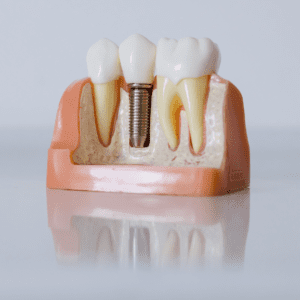
Benefits of implant-supported restorations
1. Greater stability and durability.
Because the implant is anchored directly into the jawbone, the restoration is less likely to come loose or break.
2.More comfortable
Implant-supported restorations also tend to be more comfortable and natural-looking, as they are custom-made to match the patient’s existing teeth.
3.No harm to adjacent teeth
Dental implants do not require healthy adjacent teeth for support
4.Bone stimulation
They provide stimulation to the jawbone to prevent bone loss
Drawbacks of implant-supported restorations
While implant-supported restorations have many advantages, there are also some potential drawbacks to consider.
1.Cost
One is the cost – implant-supported restorations can be more expensive than FPDs, especially if multiple implants are needed.
2.More invasive
Another consideration is that the implant placement process can be more invasive .
3.Longer healing
Implants require a longer healing time than the preparation for an FPD.
4.Require surgery
Patient should be medically fit to undergo Implant surgery.
Implant placement process
The process of getting an implant-supported restoration typically involves several stages.
First, the implant is surgically placed into the jawbone. This may be done under local anesthesia or sedation, depending on the patient’s preference.
After the implant is in place, a healing period of several months is usually required to allow the implant to fuse with the surrounding bone.
Once the implant has fully integrated, the restoration (such as a crown or bridge) is attached to the implant using an abutment. This part of the process typically takes less time than the implant placement itself.
What to expect during and after the procedure
Patients should expect to experience some discomfort and swelling in the days following implant placement
Pain medication and ice packs can help to manage these symptoms.
It is also important to avoid chewing on the implant site .
Remember to maintain good oral hygiene during the healing period.
Once the implant-supported restoration is in place, patients can expect to care for it much like they would care for their natural teeth.
This includes regular brushing, flossing, and dental check-ups to ensure the implant is functioning properly.
Fixed partial dentures (FPDs)
Fixed partial dentures (FPDs), also known as bridges, are another common option for replacing missing teeth.
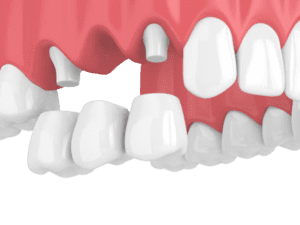
Fixed partial dentures are prosthetic devices that are used to replace one or more missing teeth.
They are called “fixed” because they are cemented into place and cannot be removed by the patient.
Process of Placing FPDs:
The process of placing an FPD typically involves two dental appointments.
During the first appointment, the abutment teeth are prepared by removing a portion of their enamel to make room for the crowns that will support the pontic.
An impression is then taken of the prepared teeth and sent to a dental laboratory where the FPD will be fabricated.
In the meantime, the patient will be fitted with a temporary bridge to protect the prepared teeth and maintain the patient’s appearance.
Once the FPD is ready, the patient will return for the second appointment.
The temporary bridge will be removed, and the FPD will be cemented into place.
Advantages of Fixed Partial Dentures:
1.Less Invasive
One of the main advantages of FPDs is that they are a less invasive option than implant-supported restorations.
The placement of FPDs does not require surgery, and the preparation of the abutment teeth is minimally invasive.
2.Less Expensive
FPDs are also typically less expensive than implant-supported restorations, making them a more affordable option for some patients.
Disadvantages of Fixed Partial Dentures:
1.Sacrifice of healthy adjacent teeth
One of the main disadvantages of FPDs is that they require healthy abutment teeth to support the pontic.
This means that adjacent teeth must be filed down and prepared, even if they are healthy and free of decay or damage.
2.Has ill effects over time
FPDs also do not stimulate the jawbone in the same way that dental implants do, which can lead to bone loss over time.
3.Difficult to maintain
Additionally, FPDs can be more difficult to clean than natural teeth, which can increase the risk of tooth decay and gum disease.
Key Factors affecting choice
The key factors that patients and dental professionals should consider when choosing between implant-supported restorations and fixed partial dentures (FPDs).
Oral Health Status:
The condition of a patient’s oral health is a crucial factor in determining whether implant-supported restorations or FPDs are a suitable option.
Patients with poor bone density and weak gums are not good candidates for dental implants.
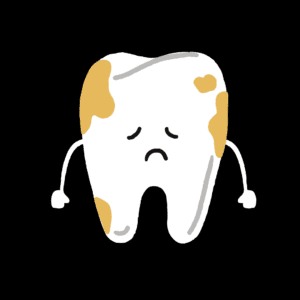
Patients with adequate bone density and healthy gums are good candidates for dental implants.
However, patients with insufficient bone or periodontal disease may require preliminary treatment before implant placement.
Patient Preferences:
The patient’s preferences and expectations for the final outcome of the restoration should be taken into account when choosing between implant-supported restorations and FPDs.
Some patients may prefer the stability and durability of implants, while others may prefer the simplicity and lower cost of FPDs.

Some patients may prefer the stability and durability of implants, while others may prefer the simplicity and lower cost of FPDs.
Esthetics:
Both implant-supported restorations and FPDs can provide a natural-looking result, but the esthetic outcome may differ.
The color, shape, and position of the replacement teeth must be considered to achieve a harmonious result with the surrounding natural teeth.
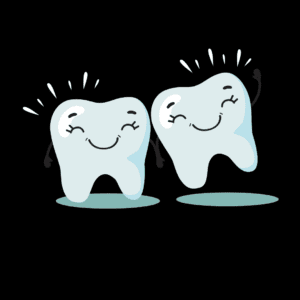
Longevity:
Implant-supported restorations are known for their longevity and can last for many years with proper maintenance.
FPDs, on the other hand, may require replacement after several years due to wear and tear.
The longevity of the restoration affects the quality of life of the patient.
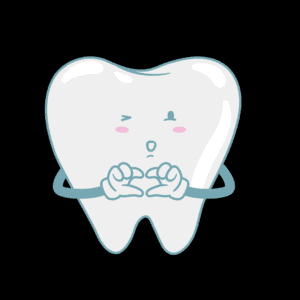
Maintenance:
Both implant-supported restorations and FPDs require proper maintenance to ensure their longevity.
Patients must commit to good oral hygiene practices and regular dental check-ups.

Patients must commit to good oral hygiene practices and regular dental check-ups to avoid complications such as peri-implantitis or decay in the supporting teeth.
Skill Level of the Dentist:
The skill level and experience of the dentist also play a significant role in the success of implant-supported restorations and FPDs.
The placement of both implants and fixed dentures requires specialized training, and not all dentists have the necessary experience to perform the procedure. Implant procedures are more technique sensitive compared to FPDs.
The skill level and experience of the dentist also play a significant role in the success of implant-supported restorations and FPDs.
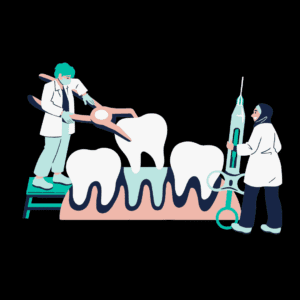
Comparison between Implant vs FPD
| S. No. | Factors | Implant-Supported Restorations | Fixed Partial Dentures (FPDs) |
|---|---|---|---|
| 1 | Success | Higher success rate | Lower success rate |
| 2 | Longevity | Lasts up to 25 years or more | Lasts between 5-15 years |
| 3 | Esthetics | More esthetically pleasing | Comparatively less Natural-looking smile |
| 4 | Patient Comfort | More comfortable | Potential discomfort or irritation |
| 5 | Maintenance | Regular brushing and flossing | Additional care to clean area underneath the bridge |
| 6 | Stability | More stable | Less stable |
| 7. | Bone stimulation | Yes | No |
| 8 | Cost | More | Comparatively less |
| 9 | Surgical procedure | Required | Not required |
| 10 | Time duration | Longer implant healing period | Faster procedure |
| 11 | Weak Bone | Cannot be used | Can be given |
| 12 | Poor Medical Health of patient | Not advisable | Can be placed |
| 13 | Effect on adjacent teeth | No effect | Adjacent teeth deteriorate with time |
The economic evaluation in a study showed that dental implants cost from $251 to $325 more than three-unit fixed partial dentures and implants also had survival rates that were 10.4% higher than FPD.
Another cost-benefit, patient-centred analysis on implants vs FPD shows that Single implants and their crowns have high survival rates that exceed the survival rates for fixed partial dentures on teeth.
Making a Choice between Implant vs FPD Based On The Scenario
In the following table, we have summarized key factors to consider when choosing between implant-supported restorations and fixed partial dentures (FPDs), highlighting which option may be more suitable for different situations:
| S.No. | Case Presentation | Implant or FPD |
| 1. | Poor bone density, Bone not suitable for implant integration | FPD |
| 2. | Medically compromised patient,Unfit for surgery | FPD |
| 3. | Patient wants a replacement as early as possible.No time to wait for implant integration to bone | FPD |
| 4. | Patient wants a more esthetic option | Implant |
| 5. | Adjacent teeth not sound,Cannot support a prosthesis | Implant |
| 6. | Restoration needed with higher longevity and success rate | Implant |
| 7. | Patient Wants a low cost option | FPD |
Teledentistry in India : Revolutionizing Dental Careers
Conclusion:
In general, implant-supported restorations tend to be more durable, longer-lasting, and easier to maintain.
They also offer more natural-looking results and better preservation of the jawbone. However, they do require a more invasive surgical procedure and can be more costly.
After analyzing the advantages and disadvantages of both, it is seen that although there is no clear winner. The choice depends on the situation .
When making the decision between implant-supported restorations and fixed partial dentures, there are several factors to consider, including cost, oral health status, patient preferences, and the skill level of the dentist.
Both options have their own unique benefits and drawbacks, and the decision ultimately comes down to individual patient needs and preferences.
In summary, the decision between implant-supported restorations and fixed partial dentures is a complex one that should be made with the guidance of a qualified dental professional.
By weighing the benefits and drawbacks of each option and considering individual patient factors, patients and dental professionals can make the best decision for achieving optimal oral health and aesthetics.
Dental Clinic Management for Success : 6 Secret Revenue Boosting Strategies
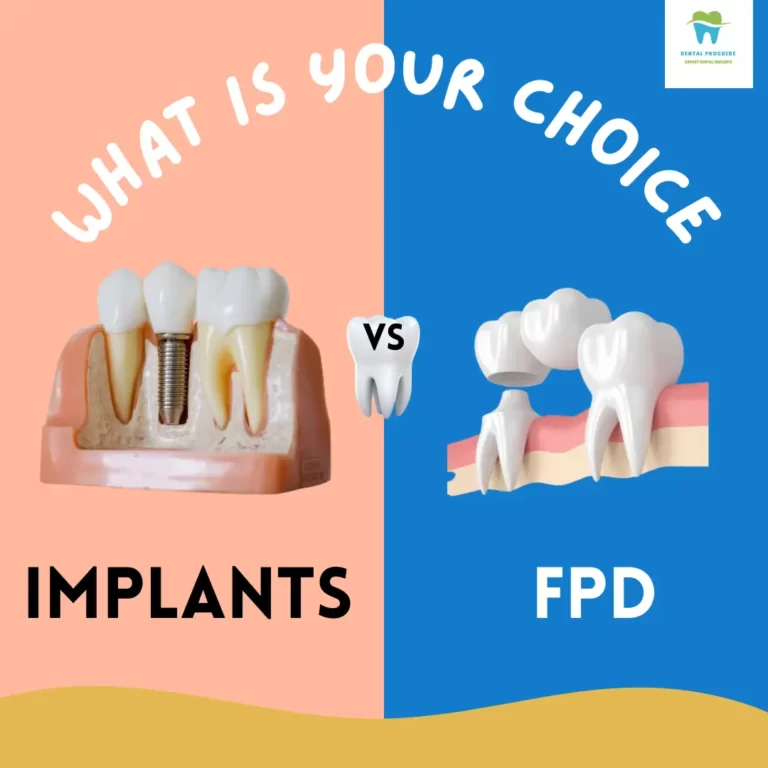

What’s up, I read your blogs daily. Your writing style is awesome, keep doing what you’re doing!